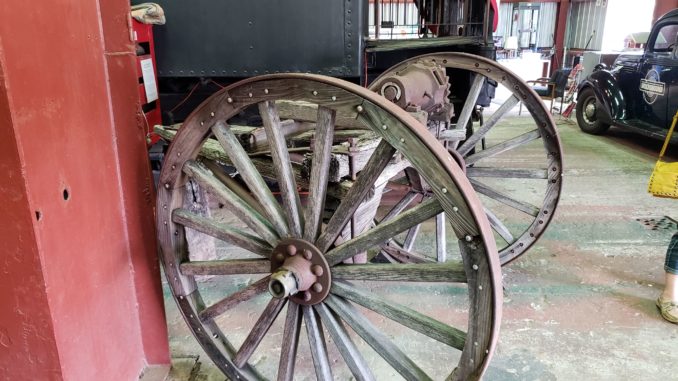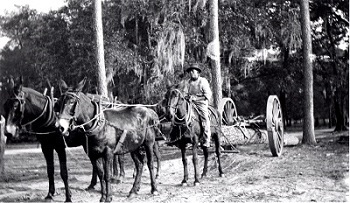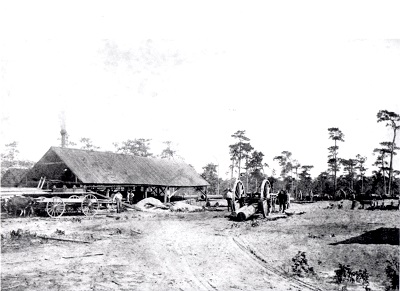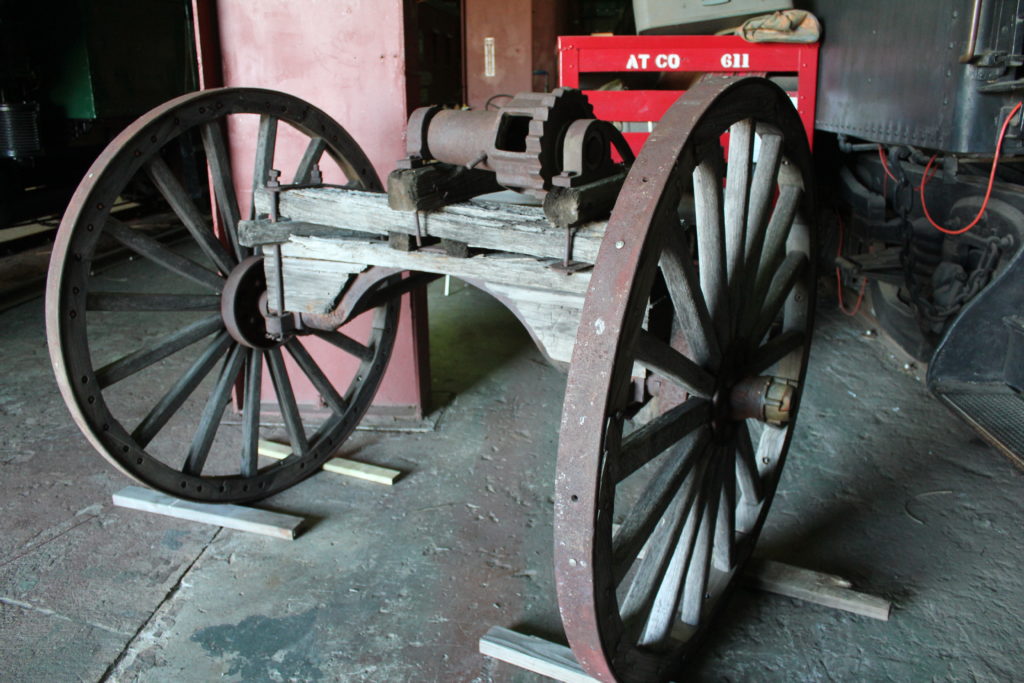
With the donation of a 1930s-era log cart, assistant librarian Lloyd Neal has compiled some research on the antique vehicles.
Two-wheeled, animal-powered, wooden ‘log carts’ were used in the timber industry from the late 1800s up to the mid 1900s. Log carts could be found in a number of states in a variety of designs and wheel sizes. These could be powered by mules, horses, or oxen.

The purpose of the log cart was to move the log from where it was cut in the forest to a loading area for transport to the saw mill. The loading point is generally called a ‘landing’. The process of moving the log to the landing is called ‘skidding’. The log carts could also be used to move the logs directly to the saw mill from the forest. Movement of the logs from the landing to the saw mill was often by railroad until the extensive use of trucks before and after World War II.
Lifting one end of a log off of the ground made the log easier to move. The log was dragged or skidded with the other end of the log on the ground. The lifted end would be swung under the axle of the log cart for movement. Chains or a grapple would be attached to lift one end of the log. Some types used in the south used a winch to lift up the end of the log from the ground. The winch was operated by hand with levers inserted into slots on the winch. A ratchet held the winch in position until ready for release at the landing.

There were a number of other names used for the log carts such as ‘high wheels’, ‘big wheels’, and ‘logging wheels’.
Log carts built out of wood in the south could have either an arched or straight axle. The wagon wheels on the arched axle design generally had a diameter of about five feet. The straight axle-type wagon wheels could be as much as ten feet in diameter.
The recently-donated log cart at SRM is an arched-type axle that was used in the south until the 1940s with the winch and wagon wheels in the general description above of log carts used in the south. The log cart comes from the Lake Defuniak, Florida area and illustrates the use of animal powered transportation in the forest industry in the southeastern states for many years.
The forest industry has been and continues to be a major employer and business in the southeast. A 2016 report states that the forest industry is the second largest employer after the poultry industry in manufacturing jobs in the state of Georgia (Economic Benefits of the Forest Industry, Georgia: 2016 Report of the Georgia Forestry Commission).

It is fitting that SRM displays the mule-powered log cart next to Campbell Limestone No. 9 steam locomotive. This locomotive served the forest industry for years in both Alabama and South Carolina. It is not known, but possible, that similar log carts may have been in use with No. 9 when it was used by the Kentucky Lumber Company (Alabama) and/or Santee River Hardwood Company (South Carolina).
For more on SRM’s log cart, see our previous blog post.
By Lloyd Neal, Assistant Librarian
————————————————————————
Sources:
Hauling logs by oxen and high-wheelers to Pensacola and Atlantic Railroad Company depot – Lake Defuniak, Florida. 190-?. Black & white photoprint. State Archives of Florida, Florida Memory. Accessed 10 May. 2018. <https://www.floridamemory.com/items/show/28098>
High-wheeler hauling log at Ellaville. 1925. Black & white photonegative. State Archives of Florida, Florida Memory. Accessed 10 May. 2018. <https://www.floridamemory.com/items/show/272877>




Be the first to comment